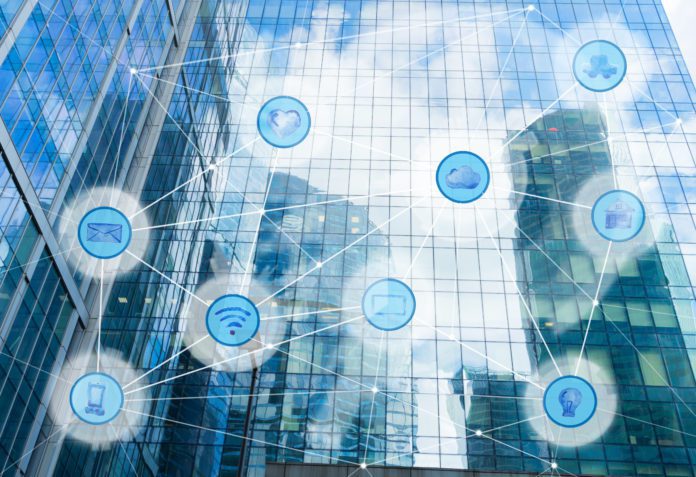The implementation of new wireless technologies and the rise of data analytics is enabling new use cases in the smart building segment, according to a white paper published the?Wireless Broadband Alliance?(WBA) and the?LoRa Alliance
?Smart buildings have been around for decades but have primarily focused on the day-to-day operations of the building such as ventilation, lighting and access control. These systems were generically proprietary,? according the white paper. ?With new, standardized, wireless technologies and the rise of data analytics, many new use cases are now commercially feasible. Businesses have an incentive to more efficiently use expensive leased space, reduce utility energy/water consumption and to increase employee productivity as well as enable remote features such as locking and unlocking.?
Both the WBA and the LoRa Alliance highlighted that the flexibility offered by wireless devices now allows placement anywhere in a building without pre-planning sensor locations — or even seeking permission from the building owner, in some cases.
According the white paper, building compliance and people safety are also areas of relevant IoT use cases (fire detection, water quality, amongst others).
-Wi-Fi use cases
Wi-Fi on campus connects student or employee personal devices (mobile, laptop or tablets) at high speed and reliably, as well as offering the maximum coverage so that students can sit wherever they want. ?Wi-Fi has always been strongly relevant for high-speed internet surfing, mostly indoor,” the white paper noted. “New roaming strategies based on Next Generation Hotspot (NGH) – [a] combination of automatic authentication from the Wi-Fi Alliance?s Passpoint with seamless roaming experience advocated on the WBA?s Wireless Roaming Intermediary eXchange framework – are significantly improving customer experience and offer a seamless connection.?
Indoor security cameras can rely on Wi-Fi deployed in campuses, buildings and cities. Wi-Fi is also deployed in nearly 100% of hotels globally, as a platform for broadband and customer focused services, the white paper said. Wi-Fi also supports the operations of the hotel through lift shaft monitoring, roof space and door/locker closures.
-LoRaWAN use cases
The white paper highlighted that LoRaWAN is ideal for a number of use cases which require deep indoor coverage and long battery life.
?For many applications, sensors are placed in remote areas, where coverage is hard to ensure and where access for battery replacement is difficult. Some examples of these types of applications would be leak detection, sub metering, smoke detector alarms, intrusion and presence monitoring, rodent trap monitoring and predictive cleaning and maintenance,” the paper said.??LoRaWAN also offers the ability to cover outdoor areas cost effectively to enable things like smart parking, smart lighting, beam lighting, asset/vehicle tracking, or smart irrigation and allows the smart building to be part of a larger campus or city.”
LoRaWAN technology can also be used in a number of ways to monitor how space is being utilized in smart buildings and offices.
Creating safer building evacuation systems is another of the applications where LoRaWAN technology brings a high value, according to the WBA and the LoRa Alliance” ?Being able to regularly monitor the proper functioning and the battery level of an Exit sign for example, helps to avoid any risk of failure during an evacuation event. A simple light bulb failure could have major consequences in case of an emergency.?
LoRaWAN also allows for early leak detection in smart buildings.
?Insurers, building owners and tenants all have a vested interest in detecting leaks early. The damage caused by even a slow leak over one weekend can run into the $10K?s to $100K?s very easily,” the paper said. “If expensive equipment is damaged or the leak is more substantial, the costs can be significantly larger.?
Hotels and smart hospitality are another area where LoRaWAN can provide specific use cases including air conditioning and energy monitoring, door/window opening alarms, room usage, leak detection, temperature and humidity monitoring, and air quality monitoring.

